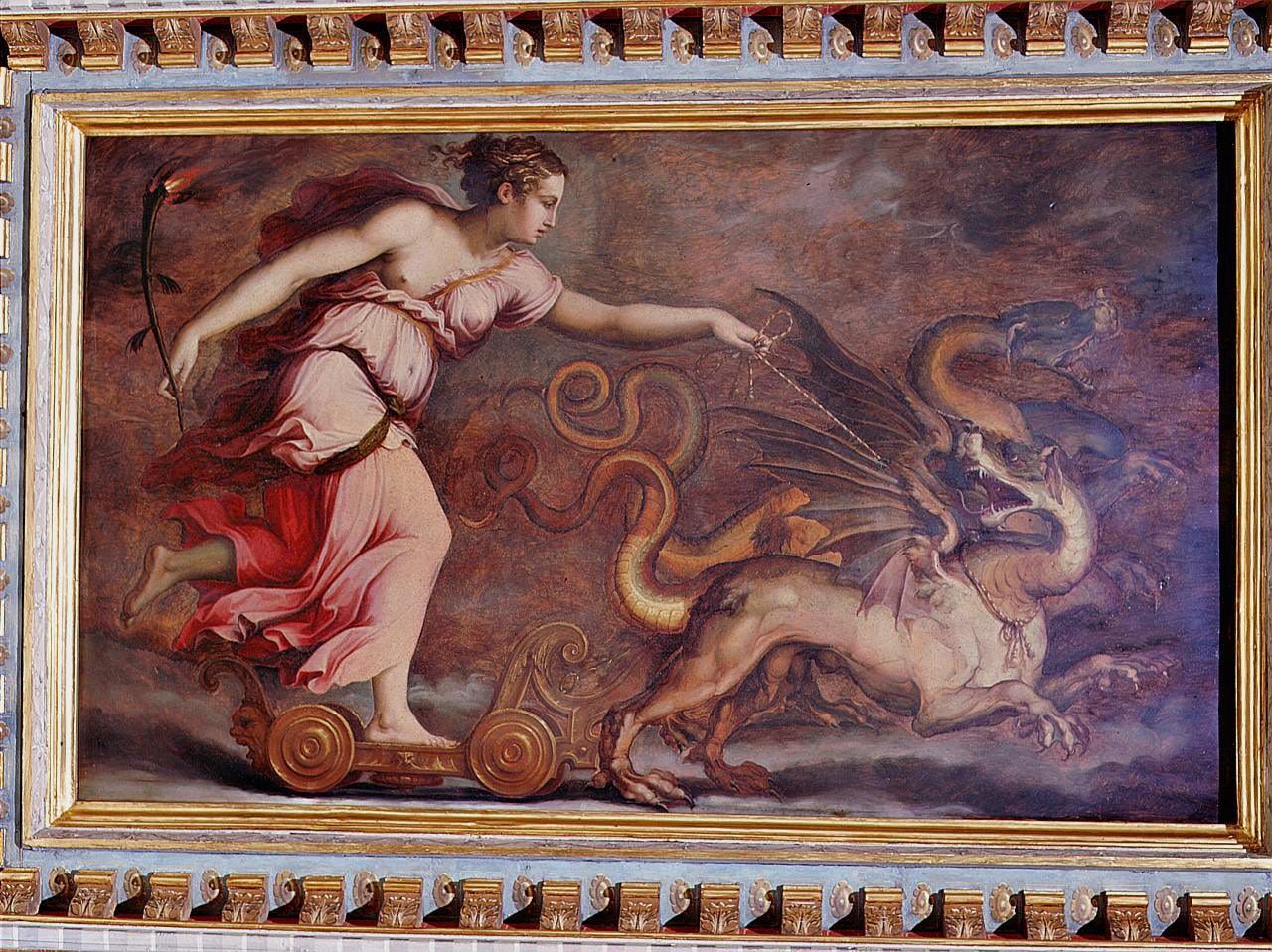In the framework of Evolutionary Astrology, Ceres symbolizes the nurturing and sustaining aspects of life, deeply intertwined with themes of nourishment, protection, and the cyclical nature of existence. As the Roman counterpart of Demeter, Ceres embodies the principles of growth and abundance while also invoking the complexities of loss, transformation, and rebirth. Ceres is closely linked to agricultural fertility and the nurturing of crops, which serves as a metaphor for the nourishment we seek in both physical and spiritual realms. In this context, she represents the maternal force that provides sustenance and life. The Arval Brothers’ invocation of Mars and Ceres for protection against "rust" highlights a duality in her role: while she nourishes, she also safeguards against decay and destruction, which can threaten both the harvest and the tools of creation. This duality reflects a fundamental tension in life, the balance between growth and decay, creation and destruction.
The snake, often associated with Ceres, further emphasizes this complexity. In mythology, the snake can symbolize transformation, renewal, and the deep connection to the earth. Ceres riding a chariot drawn by snakes suggests her ability to navigate the depths of the unconscious, integrating shadow aspects and illuminating the path to renewal. This relationship echoes the Jungian understanding of the shadow, where the snake embodies both fear and healing, urging us to confront our inner fears to foster growth.
Ceres and Demeter: Guardians of Civilization
Ceres’ association with Demeter extends beyond mere agriculture; it reflects her role as a goddess of protection and civilization. The epithet Thesmophoros, or “bringer of law,” indicates her connection to societal order and the cultivation of culture. As a protector, Ceres guides humanity from the primal state of foraging to the structured life of agriculture, embodying the evolution of consciousness from chaos to order. This aligns with the idea that civilization's foundations lie in nurturing, caring, and structured community dynamics. Demeter’s depiction in various myths, as a horse-headed goddess, snake-haired, and associated with different realms (underworld, air, and water), highlights her multifaceted nature. This representation echoes the goddess’s connection to life’s cycles and the natural order, reinforcing the theme of guardianship over both earthly and spiritual realms. As she embodies the power of life and death, Ceres serves as a mediator between these dimensions, facilitating the flow of energy and sustenance necessary for growth and regeneration.
The Interplay of Animals and Nature
The animals associated with Ceres, including foxes, snakes, and horses, serve as potent symbols of her influence over the natural world. The fox, often linked to cunning and adaptability, symbolizes the need for resourcefulness in nurturing our own lives and the lives of others. Horses, tied to Demeter’s mythos, represent strength, freedom, and the journey of the soul. This connection emphasizes the importance of movement and transformation within our evolutionary path, where we must learn to harness our innate power and drive. The interplay between these animals and Ceres’ nurturing qualities reflects the intricate relationships we have with nature. They remind us of the cycles of life, death, and rebirth, encouraging us to honor our instincts and the natural rhythms of the earth. Ceres teaches that true nourishment comes not just from sustenance but from honoring these connections and understanding the delicate balance between giving and receiving.
In the myth of Demeter and Persephone, we see the profound depth of grief and loss that Ceres embodies. When Persephone is taken to the underworld, Demeter’s anguish sends the world into a state of despair, manifesting in failed crops and famine. This myth highlights the cyclical nature of life; as Demeter weeps for her daughter, she represents the heartache of separation and the inevitable grief that comes with loss. The connection between Demeter's nurturing aspect and her experience of profound sorrow illustrates the intricate balance between life and death, love and loss. Demeter's search for Persephone symbolizes the journey through grief, showing the resilience required to confront the pain of separation and the transformative power of hope.
At its core, this tale speaks to the necessity of confronting the darker aspects of existence, symbolized by Persephone's abduction by Hades, highlighting the inevitable cycles of death and rebirth intrinsic to human experience. As Persephone descends into the underworld, she is stripped of her radiant vitality, representing the soul's immersion in the depths of its shadow, where aspects of the self are confronted and integrated. This descent is not merely an act of victimization; rather, it serves as a catalyst for deep psychological and spiritual growth. Ultimately, Ceres (Demeter) teaches us about the delicate balance between nurturing and the harsh realities of life. She embodies the need to confront our grief and acknowledge the cyclical nature of existence. Through her story, we are reminded that from the depths of despair, renewal is possible, and that the very essence of life is a dance between light and shadow. Compassion and nurturing comes from facing our own loss.





